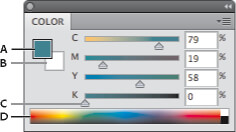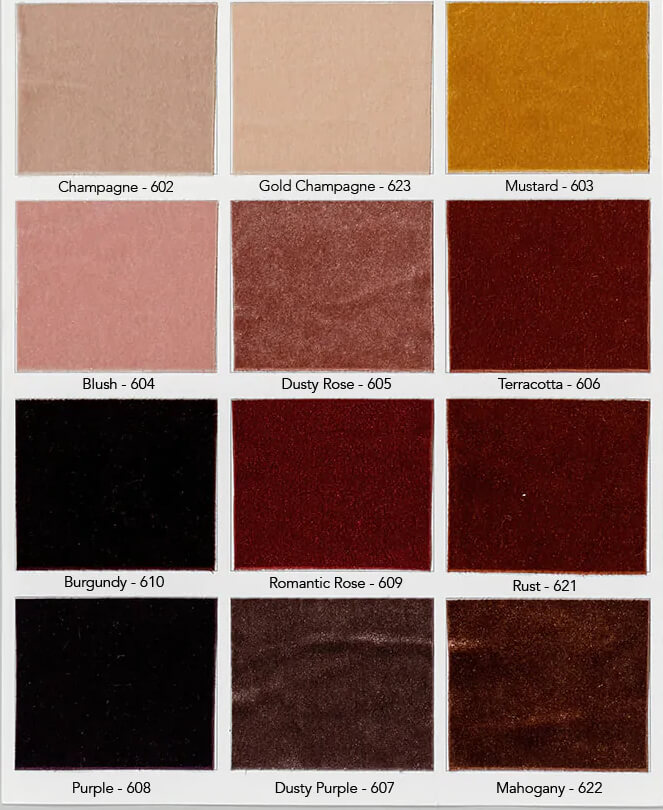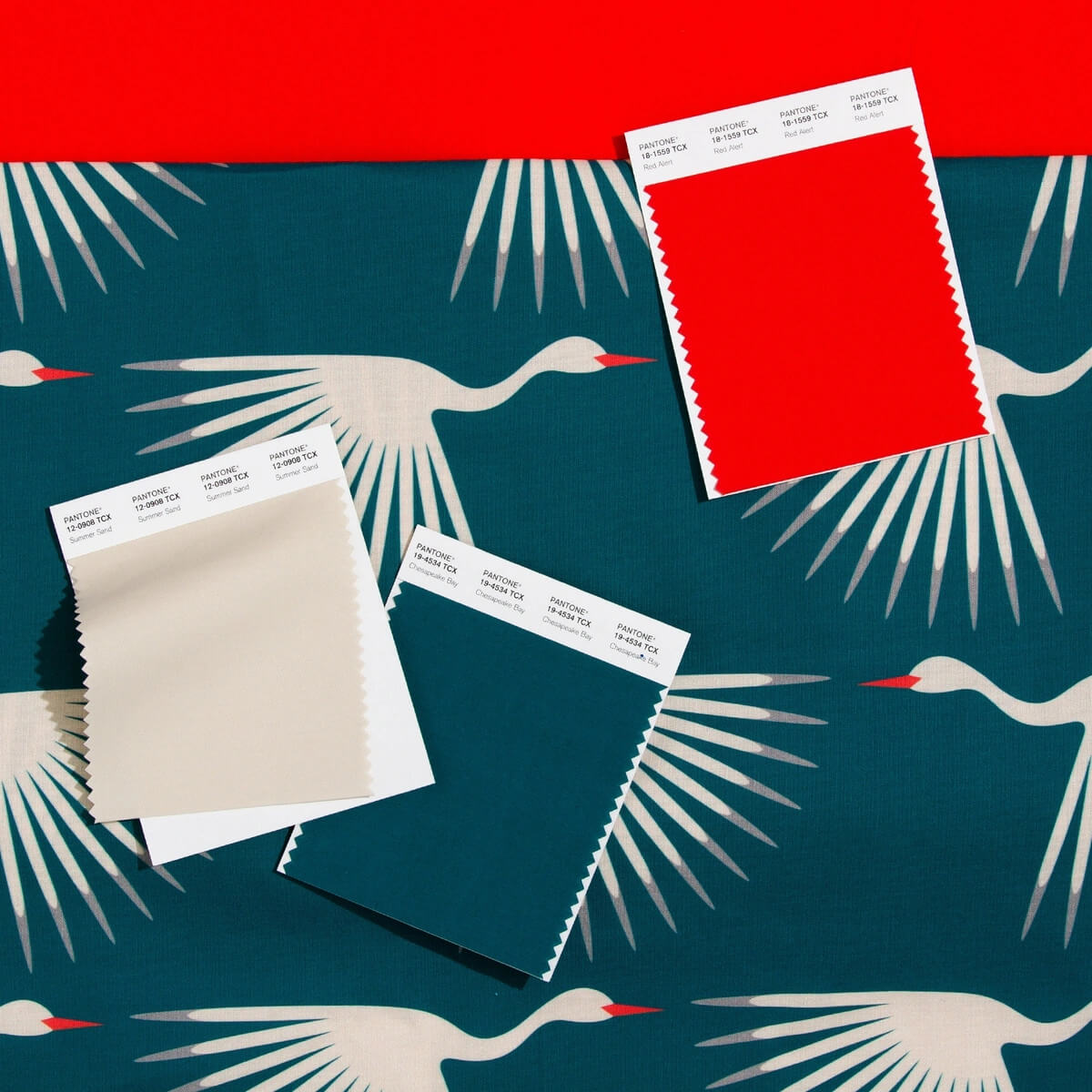Se quiser que os seus desenhos impressos tenham um aspeto fantástico, utilize estes passos como guia antes de enviar o seu desenho para ser impresso profissionalmente. Isto ajudará a garantir que não existem erros no produto final. Neste artigo, vou dizer-lhe como fazer corresponder a cor da tinta aos tecidos.
Utilizar a tabela CMYK como fornecedor de tecidos
Já alguma vez se perguntou porque é que as cores do seu design de impressão são diferentes das cores do seu ecrã? Se já teve esta experiência, não está sozinho. Embora possa parecer uma coisa insignificante, a cor é, na verdade, uma parte muito importante de qualquer design, e acertar pode ser complicado. Aqui está uma breve descrição de algumas das razões pelas quais as cores podem parecer diferentes na impressão e no ecrã.
A primeira razão tem a ver com a forma como os nossos olhos percepcionam a cor. Os nossos olhos recebem ondas de luz e transformam-nas em sinais eléctricos que o nosso cérebro interpreta como cor. O espetro de luz visível contém todas as cores que podemos ver, do vermelho ao violeta. Mas quando se trata de ecrãs, nem todas as cores são iguais.
A maioria dos ecrãs emite o que se designa por luz "aditiva", o que significa que criam cor através da combinação de diferentes intensidades de luz vermelha, verde e azul (RGB). Por outro lado, os materiais impressos reflectem a luz da sua superfície, pelo que utilizam um processo "subtrativo" em que são utilizadas diferentes combinações de tinta ciano, magenta, amarela e preta (CMYK) para criar cores diferentes. É por isso que nos referimos frequentemente a estes dois processos como "impressão RGB" e "impressão CMYK".
A segunda razão tem a ver com o dispositivo que está a utilizar para visualizar os seus desenhos. Dispositivos diferentes utilizam modelos de cor diferentes para produzir cor, e cada modelo utiliza uma gama diferente de valores de cor. Os três modelos mais comuns são sRGB, Adobe RGB e CMYK. A maioria dos computadores e telemóveis utiliza o modelo de cor sRGB, enquanto a maioria das impressoras utiliza o modelo de cor CMYK. E embora o Adobe RGB cubra uma gama maior de cores possíveis do que o sRGB ou o CMYK, não é tão utilizado porque não pode ser reproduzido com precisão na maioria dos dispositivos.
A terceira razão é que os materiais impressos são constituídos por pequenos pontos de tinta, enquanto os desenhos digitais são constituídos por pequenos píxeis de luz. Quando a tinta é impressa em papel, os pontos misturam-se para formar uma área sólida de cor. Mas quando os pixéis são vistos num ecrã, permanecem separados uns dos outros para que possamos ver os pixéis individuais que compõem uma imagem. Esta diferença é conhecida como "ganho de pontos" ou "rastreio de meios-tons" e pode fazer com que as cores impressas pareçam mais escuras e mais saturadas do que no ecrã.
Quando se trata de escolher cores de tinta, há algumas coisas a ter em conta. Se estiver a tentar fazer corresponder uma cor de tinta a um tecido, a primeira coisa que precisa de fazer é descobrir quais os valores CMYK que representam as cores que pretende fazer corresponder. Assim que tiver esses valores, pode utilizar uma variedade de ferramentas online para encontrar cores de tinta que correspondam. Também pode pedir ajuda ao seu fornecedor para encontrar as cores de tinta correctas. Eles devem ser capazes de combinar a cor do tecido de forma muito próxima.
Utilizar as amostras de cores do fornecedor de tecidos
Quando está a tentar combinar cores de tinta com tecido, uma das melhores coisas que pode fazer é pedir ao seu fornecedor amostras de cores. Desta forma, pode segurar as amostras junto ao tecido e ter uma boa ideia do que funcionará melhor. Também pode pedir algumas amostras diferentes para poder testar diferentes tons e tonalidades. Depois de encontrar algumas cores que lhe agradam, é altura de começar a testá-las. A melhor forma de o fazer é pintar pequenos quadrados de cada cor num pedaço de papel de rascunho ou cartão. Depois, segure os quadrados contra o tecido e veja como ficam. Se possível, tente ver as cores com luz natural e artificial. Isto ajudá-lo-á a ter uma melhor noção de como as cores ficarão em diferentes ambientes. Quando tiver encontrado algumas cores de que gosta, está na altura de começar a pintar!
Pantone torna-se o padrão
Se for como a maioria das pessoas, provavelmente não pensa em pintar com muita frequência. Mas para quem trabalha no sector do design, a pintura é uma parte vital do trabalho. E quando se trata de pintura, há uma empresa que é o porta-estandarte: Pantone.
A Pantone é o fornecedor líder mundial de padrões de cor e os seus produtos são utilizados por designers numa variedade de sectores, desde a moda à decoração de interiores. Se é um designer, é provável que tenha utilizado produtos Pantone em algum momento da sua carreira.
Mas o que acontece quando é necessário fazer corresponder uma cor de tinta ao tecido? Pode ser um desafio, mas felizmente existem algumas dicas e truques que pode utilizar para garantir que consegue a combinação perfeita.
Em primeiro lugar, é importante compreender as diferenças entre tecidos opacos, transparentes e translúcidos. Os tecidos opacos bloqueiam toda a luz, enquanto os tecidos transparentes permitem que a luz passe através deles. Os tecidos translúcidos situam-se algures no meio, permitindo a passagem de alguma luz, mas não de toda ela.
Quando souber com que tipo de tecido está a lidar, pode começar a pensar na cor. Se estiver a combinar tinta com um tecido opaco, deve escolher uma cor de tinta que seja semelhante à cor do tecido. Para tecidos transparentes ou translúcidos, deve escolher uma cor de tinta que seja mais escura do que a cor do tecido.
Também é necessário ter em conta o valor das cores com que está a trabalhar. O valor refere-se à escuridão ou claridade de uma cor. Uma cor escura tem um valor baixo, enquanto uma cor clara tem um valor alto. Ao combinar a tinta com o tecido, deve escolher uma cor de tinta com um valor semelhante ao valor do tecido.
Finalmente, é importante pensar no subtom das cores envolvidas. O subtom refere-se à tonalidade subjacente de uma cor. Por exemplo, o vermelho pode ter um subtom de laranja ou azul. Ao combinar tinta com tecido, a cor de tinta escolhida deve ter um subtom semelhante ao da peça de tecido selecionada. Tenha estas dicas em mente e será capaz de combinar a tinta com a cor do tecido como um profissional!
Conclusão
Com estas dicas, deve ser capaz de combinar cores de tinta com tecidos como um profissional! Se ainda tiver dificuldades, ou se quiser ajuda especializada para decidir quais as cores que funcionam melhor na sua casa, contacte-nos hoje mesmo. A nossa equipa de design adoraria ajudá-lo a criar um espaço que seja simultaneamente elegante e confortável para si e para a sua família.


